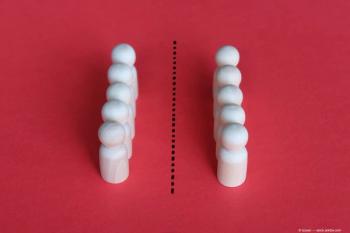
Patient Case #2 Initial Impressions
Blake K Williamson MD, MPH, MS, discussed initial impressions of a female patient with high myopia and astigmatism who is an ideal candidate for phakic IOL implant.
Blake K. Williamson, MD, MPH, MS: In terms of my initial impressions of this case, I was struck by how normal and routine of a case this was. It is your fastball, right down the middle myopia and astigmatism case that comes in. It may be a little on the higher end, -6 [or] -7 [manifest refraction] is a little higher, but certainly within the parameters of, let’s say, laser vision correction with LASIK. The parameters that stood out to me with respect to the ocular anatomy is this patient has a low amount of corneal cylinder, has a very normal appearing morphology of the cornea, and a very normal appearing posterior elevation map. Pachymetry was perfectly thick. Also, the anterior chamber depth was deep enough where all of our options were open to us. This patient was about to turn 40 years old too, so some people might have considered a custom lens replacement, although, I don’t know if that’s the least invasive thing considering there are other wonderful options.
Some of the issues with high refractive orders and refractive surgery, there are a few things. With higher treatments, sometimes there is risk for epithelial remodeling, in which case you can have some drift of that final refractive outcome, if not immediately then within the first year or two. I’m referring to when you’re doing refractive surgery on the cornea, with LASIK specifically. With some of these bigger ablations also, if you’re doing PRK [photorefractive keratectomy], you’re concerned about corneal haze postoperatively. You’ll want to make sure you’re using mitomycin C. Anytime you’re considering a lens-based approach for a very high refractive error, you’re always concerned about the risk of retinal tears or retinal detachments, particularly if this patient has yet to have a posterior vitreous detachment [PVD]. So PVD status is something you want to be looking at closely.
I would recommend, at least me in my practice, I recommend having a retinal exam from our retinal specialists for these high myopia cases. I think all those are important considerations. I think there are some cases of very high myopia that can’t be corrected with other means of vision correction. Once you get past about a -9 or so, I think you’ll find very few surgeons who are comfortable doing corneal procedures to correct vision. So at some point, ICL [implantable contact lens] becomes the only thing you can do in those very high orders of myopia.
But I think what’s interesting about this case, and what we took away from this roundtable discussion, is this patient could have had any procedure done. What’s interesting is that she was an engineer, along with her husband, and they were coming in for refractive surgery evaluations at the same time. The husband was at a -14, I believe, so his only option was ICL. She simply wanted to have the same thing as him. She did her homework, read up on the technology. She really liked that it was reversible, and liked the idea of perhaps less recovery, quicker visual recovery, and less pain in that first day as they heal from surgery.
I was very open-ended with that decision-making process. I said, “Look, I think that you’d be a slam-dunk LASIK case. I don’t think you would need a custom lens replacement. That wouldn’t be my first choice. Yes, it’s true; because of your age you may need some near-vision correction or some reading glasses at some point in your 40s. It’s hard to say exactly when that’ll be, but overall if you want to do an ICL, I think that you would do very well.” And ultimately, that’s what she decided.
I think the takeaway here is that this is something patients want. Patients are talking about this to each other, having great success with it, particularly with the new ICL that’s just been released here in the United States. As a result of that, this patient chose this option and did fantastic. I think we should all be offering ICLs in our armamentarium in order to have the full complement of corrections available for myopia and astigmatism.
Thank you very much for watching this Ophthalmology Times® presentation. We hope you found this presentation informative and applicable in your daily practice.
Transcript edited for clarity
Newsletter
Don’t miss out—get Ophthalmology Times updates on the latest clinical advancements and expert interviews, straight to your inbox.















































.png)


